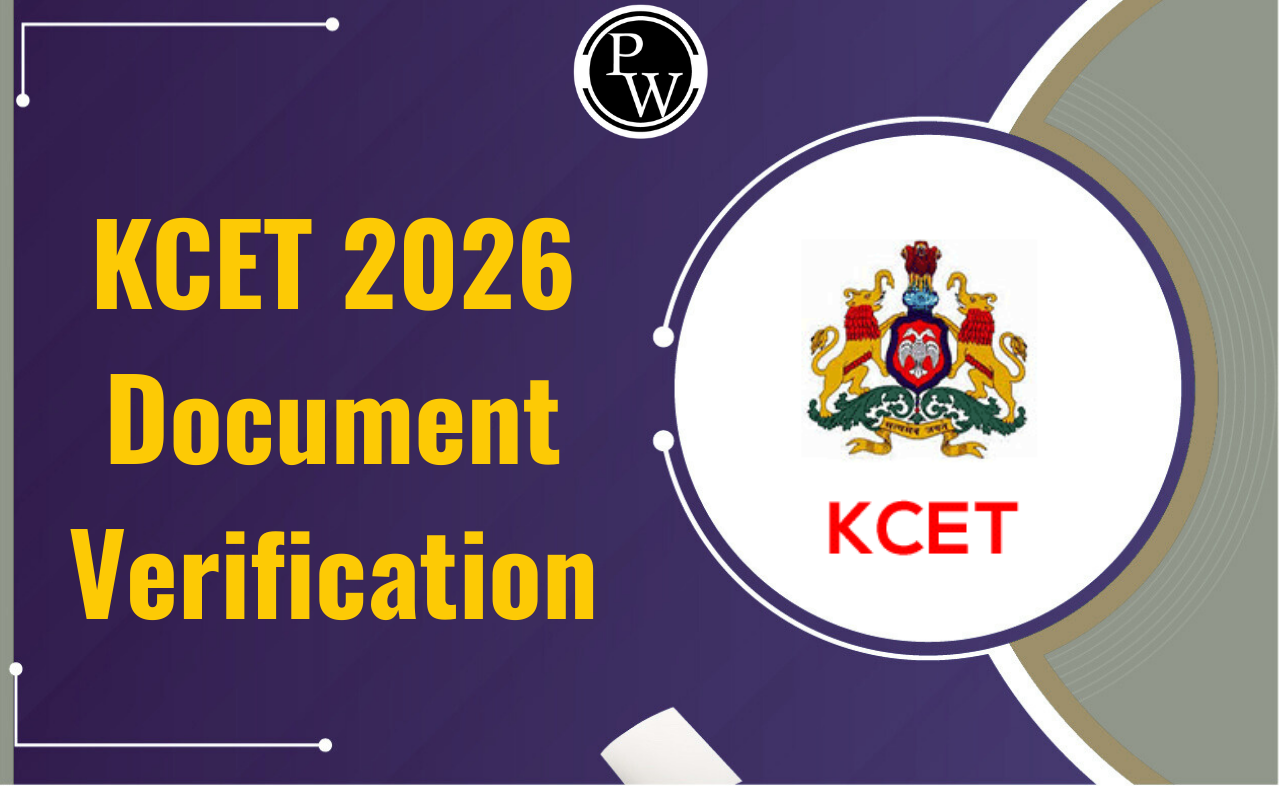
The Karnataka 2nd PUC syllabus incorporates a wide variety of subjects as outlined by the Department of Pre-University Education, Karnataka. The Kerala PUC syllabus consists of core subjects, which includes Physics, Chemistry, Mathematics, Biology, and a variety of languages (Kannada, English, Hindi, Sanskrit, etc.). The course emphasizes the importance of understanding concepts completely with applications and problem-solving methods, especially in science and math, while looking back at years 1 and 2 PUC. The syllabus closely follows NCERT and Karnataka State textbooks principles to help students prepare for a board exam and competitive exams. Students should regularly check the official website for updates to see the syllabus and for detail by subject PDF for preparation planning.
Karnataka 2nd PUC Syllabus 2026 Overview
The Karnataka 2nd PUC Syllabus 2026 has been developed for students in Science, Commerce, and Arts streams. The syllabus will include subjects, such as Physics, Chemistry, Mathematics, Biology, Economics, and Business Studies that adhere to the guidelines provided by authorities. The focus of the syllabus is on conceptual understanding, practical skills, and application-based knowledge in preparation for board and competitive exams. A balance of theory as well as continuous assessment will provide an overall evaluation. The syllabus will also be available shortly on the Karnataka Pre-University Education Board's website.
Karnataka 2nd PUC Reduced Syllabus 2026
The Karnataka 2nd PUC Reduced Syllabus 2026 will soon be published. Once released, we will learn about the reduced topics and updated syllabus details. Students are advised to keep checking the official Karnataka Pre-University Education Board website for the latest updates on the syllabus reductions and changes.
Karnataka 2nd PUC Syllabus 2026 PDF
The Karnataka 2nd PUC Syllabus, PDF for 2026 will be available soon at the official website of Karnataka Pre-University Education Board. Once it becomes available, students can download an updated syllabus and get acquainted themselves with the reduced syllabus, if any, in the latest syllabus. Keep an eye on official announcements to ascertain the syllabus and changes.
Karnataka 2nd PUC Mathematics Syllabus 2026
The Karnataka 2nd PUC Mathematics syllabus usually covers important topics such as calculus, algebra, vectors, and more, helping students prepare effectively for their final board exams.
|
Karnataka 2nd PUC Syllabus 2026 for Mathematics |
|
| Chapter-wise Solution | Important Topics |
| Chapter 1 - Relations and Functions | Types of relations: reflexive, symmetric, transitive and equivalence relations. One to one and onto functions |
| Chapter 2 - Inverse Trigonometric Functions | Definition, range, domain, principal value branch. Graphs of inverse trigonometric functions |
| Chapter 3 - Matrices | Concept, notation, order, equality, types of matrices, zero and identity matrix, transpose of a matrix, symmetric and skew symmetric matrices. Operation on matrices: Addition and multiplication and multiplication with a scalar. Simple properties of addition, multiplication and scalar multiplication. Oncommutativity of multiplication of matrices and existence of non-zero matrices whose product is the zero matrix (restrict to square matrices of order 2). Invertible matrices and proof of the uniqueness of inverse, if it exists; (Here all matrices will have real entries) |
| Chapter 4 - Determinants | Determinant of a square matrix (up to 3 x 3 matrices), minors, co-factors and applications of determinants in finding the area of a triangle. Adjoint and inverse of a square matrix. Consistency, inconsistency and number of solutions of system of linear equations by examples, solving system of linear equations in two or three variables (having unique solution) using inverse of a matrix. |
| Chapter 5 - Continuity and Differentiability | Continuity and differentiability, chain rule, derivative of inverse trigonometric functions, ???? sin−1 ? , cos−1 ? and tan−1 ?, derivative of implicit functions. Concept of exponential and logarithmic functions. Derivatives of logarithmic and exponential functions. Logarithmic differentiation, derivative of functions expressed in parametric forms. Second order derivatives |
| Chapter 6 - Application of Derivatives | Applications of derivatives: rate of change of bodies, increasing/decreasing functions, maxima and minima (first derivative test motivated geometrically and second derivative test given as a provable tool). Simple problems (that illustrate basic principles and understanding of the subject as well as reallife situations) |
| Chapter 7 - Integrals | Integration as inverse process of differentiation. Integration of a variety of functions by substitution, by partial fractions and by parts, Evaluation of simple integrals of the following types and problems based on them. ∫ dx x 2 ± a 2, ∫ dx √x 2 ± a 2 , ∫ dx √a 2 − x 2 , ∫ dx ax2 + bx + c , ∫ dx √ax2+bx+c ∫ px + q ax2 + bx + c dx, ∫ px + q √ax2+bx + c dx, ∫ √a 2 ± x 2 dx, ∫ √x 2 − a 2 dx ∫√??2 + ?? + ? ??, Fundamental Theorem of Calculus (without proof). Basic properties of definite integrals and evaluation of definite integrals |
| Chapter 8 - Application of Integrals | Applications in finding the area under simple curves, especially lines, circles/ parabolas/ellipses (in standard form only) |
| Chapter 9 - Differential Equations | Definition, order and degree, general and particular solutions of a differential equation. Solution of differential equations by method of separation of variables, solutions of homogeneous differential equations of first order and first degree. Solutions of linear differential equation of the type: dy dx + py = q, where p and q are functions of x or constants. d? d? + px = q, where p and q are functions of y or constants. |
| Chapter 10 - Vectors | Vectors and scalars, magnitude and direction of a vector. Direction cosines and direction ratios of a vector. Types of vectors (equal, unit, zero, parallel and collinear vectors), position vector of a point, negative of a vector, components of a vector, addition of vectors, multiplication of a vector by a scalar, position vector of a point dividing a line segment in a given ratio. Definition, Geometrical Interpretation, properties and application of scalar (dot) product of vectors, vector (cross) product of vectors. |
| Chapter 11 - Three Dimensional Geometry | Direction cosines and direction ratios of a line joining two points. Cartesian equation and vector equation of a line, skew lines, shortest distance between two lines. Angle between two lines. |
| Chapter 12 - Linear Programming | Introduction, related terminology such as constraints, objective function, optimization, graphical method of solution for problems in two variables, feasible and infeasible regions (bounded or unbounded), feasible and infeasible solutions, optimal feasible solutions (up to three non-trivial constraints). |
| Chapter 13 - Probability | Conditional probability, multiplication theorem on probability, independent events, total probability, Bayes’ theorem, Random variable and its probability distribution, mean of random variable. |
Karnataka 2nd PUC Syllabus 2026 for Economics
The topics covered in the Karnataka PUC Economics syllabus for 2026 are listed below. It is advised that students download the syllabus and print it out. To make sure all the subjects are covered, this should be kept close at hand. They must also complete the Karnataka PUC question papers in order to determine the exam's level of difficulty.
|
Karnataka 2nd PUC Syllabus 2026 for Economics |
|
| Chapters | Topics |
| Introductory Microeconomics | A Simple economy Central problems of an economy The organisation of economic activities The centrally planned economy The market economy Positive and Normative Economics Micro and Macro Economics Plan of the Book. |
| Preliminary Notations and Assumptions | The Consumer's Budget Budget set Price ratio and the slope of the Budget line and points below the Budget line Changes in the Budget line Preferences of the Consumer Monotonic preferences Substitution between goods Diminishing rate of Substitution Indifference Curve The shape of the Indifference Curve Indifference Map Utility Optimal Choice of the Consumer Demand curve and the Law of Demand Normal and Inferior goods Substitution and Complements Shifts in the Demand curve movements along the Demand Curve and Shifts in the Demand Curve Market Demand Elasticity along a Linear Demand Curve Factors Determining Price Elasticity of Demand for a Good |
| Production and Costs | TP, AP, and MP The Law of Diminishing Marginal Product And The Law of Variable Proportions Returns To Scale Costs Long-Run Costs |
| The Theory of the Firm under Perfect Competition | Perfect Competition Revenue Profit Maximisation Supply Curve of a Firm The Shut-down Point The normal Profit and Break-even Point Determinants of a Firm's Supply Curve Technological Progress Input Prices Unit Tax Market Supply Curve |
| Market Equilibrium | Equilibrium, Excess Demand, Excess Supply Wage Determination in Labour Market Shifts in Demand and Supply Market Equilibrium: Free Entry and Exi |
| Non-competitive Markets | Simple Monopoly in The Commodity Market Market Demand Curve is the Average Revenue Curve Other Non-perfectly Competitive Markets |
| Macroeconomics | Emergence of Macroeconomics |
| National Income Accounting | Some Basic Concepts of Macro Economics Circular Flow of Income And Methods of Calculating National Income Income Method Goods and Prices GDP and Welfare |
| Money and Banking | Functions of Money Demand for Money The Supply of Money |
| Income Determination | Ex Ante And Ex post Movement Along with a Curve Versus Shift of a Curve The short Run Fixed Price Analysis of the Product Market |
| Government Budget and the Economy | Components of the Government Budget Fiscal Policy |
| Open-Economy Macroeconomics | The Balance of Payments The Foreign Exchange Market The Determination of Income in An Open Economy Trade Deficits, Saving and Investments |
Karnataka 2nd PUC Physics Syllabus 2026
There are 13 units in the provided physics syllabus, each having extremely in-depth topics and subtopics. Chapters on electric charges and fields, current electricity, moving charges and magnetism, etc. are included in some of the units. Please review the Physics 2nd PUC curriculum provided below and adjust your study schedule accordingly.
|
Karnataka 2nd PUC Syllabus 2026 for Physics |
|
| Unit Number and Name | Unit Name |
| 1. Electric charges and fields | 1.1 Introduction 1.2 Electric Charge 1.3 Conductors and Insulators 1.4 Charging by Induction 1.5 Basic Properties of Electric Charge 1.6 Coulomb’s Law 1.7 Forces between Multiple Charges 1.8 Electric Field 1.9 Electric Field Lines 1.10 Electric Flux 1.11 Electric Dipole 1.12 Dipole in a Uniform External Field 1.13 Continuous Charge Distribution 1.14 Gauss’s Law 1.15 Applications of Gauss’s Law 1.15.1 Field due to infinitely long straight uniformly charged wire. 1.15.2 Field due to uniformly charged infinite plane sheet. |
| 2. Electrostatic Potential and Capacitance | 2.1 Introduction 2.2 Electrostatic Potential 2.3 Potential due to a Point Charge 2.4 Potential due to an Electric Dipole 2.5 Potential due to a System of Charges 2.6 Equipotential Surfaces 2.7 Potential Energy of a System of Charges 2.8 Potential Energy in an External Field 2.9 Electrostatics of Conductors 2.10 Dielectrics and Polarisation 2.11 Capacitors and Capacitance 2.12 The Parallel Plate Capacitor 2.13 Effect of Dielectric on Capacitance 2.14 Combination of Capacitors 2.15 Energy Stored in a Capacitor |
| 3. Current Electricity | 3.1 Introduction 3.2 Electric Current 3.3 Electric Currents in Conductors 3.4 Ohm’s law 3.5 Drift of Electrons and the Origin of Resistivity 3.6 Limitations of Ohm’s Law 3.8 Temperature Dependence of Resistivity 3.9 Electrical Energy, Power 3.11 Cells, emf, Internal Resistance 3.12 Cells in Series and Parallel 3.13 Kirchhoff’s Rules 3.14 Wheatstone Bridge 3.15 Meter Bridge 3.16 Potentiometer |
| 4. Moving Charges and Magnetism | 4.1 Introduction 4.2 Magnetic Force 4.3 Motion in a Magnetic Field 4.4 Motion in Combined Electric and Magnetic Fields 4.4.1 velocity selector 4.5 Magnetic Field due to a Current Element, Biot-Savart Law 4.6 Magnetic Field on the Axis of a Circular Current Loop 4.7 Ampere’s Circuital Law 4.8 The Solenoid and the Toroid 4.9 Force between Two Parallel Currents, the Ampere 4.10 Torque on Current Loop, Magnetic Dipole 4.11 The Moving Coil Galvanometer |
| 5. Magnetism and Matter | 5.1 Introduction 5.2 The Bar Magnet 5.2.1 The magnetic field lines 5.3 Magnetism and Gauss’s Law 5.4 The Earth’s Magnetism 5.5 Magnetisation and magnetic intensity |
| 6. Electronic Induction | 6.1 Introduction 6.2 The Experiments of Faraday and Henry 6.3 Magnetic Flux 6.4 Faraday’s Law of Induction 6.5 Lenz’s Law and Conservation of Energy 6.6 Motional Electromotive Force 6.7 Energy Consideration: A Quantitative Study 6.8 Eddy Currents 6.9 Inductance 6.10 AC Generator |
| 7. Alternating Current | 7.1 Introduction 7.2 AC Voltage Applied to a Resistor 7.3 Representation of AC Current and Voltage by Rotating Vectors — Phasors 7.4 AC Voltage Applied to an Inductor 7.5 AC Voltage Applied to a Capacitor 7.6 AC Voltage Applied to a Series LCR Circuit 7.8 LC Oscillations 7.9 Transformers |
| 8. Electromagnetic Waves | 8.1 Introduction 8.3 Electromagnetic Waves 8.4 Electromagnetic Spectrum |
| 9. Ray Optics and Optical Instruments | 9.1 Introduction 9.3 Refraction 9.4 Total Internal Reflection 9.5Refraction at Spherical Surfaces and by Lenses 9.6 Refraction through a Prism 9.7 Some Natural Phenomena due to Sunlight 9.7.1the rainbow 9.8 Optical Instruments (except resolving power microscope and astronomical telescope) |
| 10. Wave Optics | 10.1 Introduction 10.2 Huygens Principle 10.3 Refraction and Reflection of Plane Waves using Huygens Principle 10.4 Coherent and Incoherent Addition of Waves |
| 11. Dual Nature of radiation and matter | 11.1 Introduction 11.2 Electron Emission 11.3 Photoelectric Effect 11.4 Experimental Study of Photoelectric Effect 11.5 Photoelectric Effect and Wave Theory of Light 11.6 Einstein’s Photoelectric Equation: Energy Quantum of Radiation 11.7 Particle Nature of Light: The Photon 11.8 Wave Nature of Matter |
| 12. Atoms | 12.1 Introduction Experiment 12.2 Alpha particle Scattering and Rutherford’s Nuclear Model of Atom 12.3 Atomic Spectra 12.4 Bohr Model of the Hydrogen Atom 12.5 The Line Spectra of the Hydrogen Atom 12.6 De Broglie’s Explanation of Bohr’s Secon d Postulate of Quantisation |
| 12. Nuclei | 13.1 Introduction 13.2 Atomic Masses and Composition of Nucleus 13.3 Size of the Nucleus 13.4 Mass Energy and Nuclear Binding Energy (except binding energy per nucleon and its variation with the mass number) 13.5 Nuclear Force 13.7 Nuclear Energy |
| 13. Semiconductor Electronics: Materials, Devices and Simple Circuits | 14.1 Introduction 14.2 Classification of Metals, Conductors and Semiconductors 14.3 Intrinsic Semiconductor 14.4 Extrinsic Semiconductor |
Karnataka 2nd PUC Syllabus 2026 for Chemistry
The Karnataka 2nd PUC syllabus 2026 consists of 11 sections, each of which has a number of subtopics. The Chemistry syllabus can be found below. Chemistry modules on www.pue.kar.nic.in cover topics such as Surface Chemistry, Chemical Kinetics, Solid-state, Solutions, and Electrochemistry.
|
Karnataka 2nd PUC Syllabus 2026 for Chemistry |
|
| Unit Number and Name | Topics |
| 1.Solid-state | 1.1 General Characteristics of Solid State 1.2 Amorphous and Crystalline Solids 1.3 Classification of Crystalline Solids 1.4 Crystal Lattices and Unit Cells 1.5 Number of Atoms in a Unit Cell 1.6 Close Packed Structures 1.7 Packing Efficiency 1.8 Calculations Involving Unit Cell Dimensions 1.9 Imperfections in Solids |
| 2.Solutions | 2.1 Types of Solutions 2.2 Expressing Concentration of Solutions 2.3 Solubility 2.4 Vapour Pressure of Liquid Solutions 2.5 Ideal and Non-ideal Solutions 2.6 Colligative Properties and Determination of Molar Mass |
| 3.Electrochemistry | 3.1 Electrochemical Cells 3.3 Nernst Equation 3.4 Conductance of Electrolytic Solutions 3.5 Electrolytic cells and Electrolysis (excluding the elementary idea of laws of electrolysis |
| 4.Chemical Kinetics | 4.1 Rate of a Chemical Reaction 4.2 Factors Influencing Rate of a Reaction 4.3 Integrated Rate Equations |
| 5.Surface Chemistry | 5.1 Adsorption 5.3 Colloids 5.4 Classification of Colloids 5.6 Colloids Around Us |
| 6.General Principles and Processes of Isolation of Elements | Nil |
| 7.p-block elements | 7.1 Group 15 Elements 7.2 Dinitrogen 7.3 Ammonia 7.4 Oxides of Nitrogen (excluding structure) 7.5 Nitric Acid 7.10 Group 16 Elements 7.11 Dioxygen 7.12 Simple Oxides 7.13 Ozone 7.14 Sulphur – Allotropic Forms 7.15 Sulphur Dioxide 7.16 Oxoacids of Sulphur 7.17 Sulphuric Acid; chemical Properties use 7.18 Group 17 Elements 7.19 Chlorine 7.20 Hydrogen Chloride 7.21 Oxoacids of Halogens 7.22 Interhalogen Compounds 7.23 Group 18 Elements |
| 8.d and f Block Elements | 8.1 Position in the Periodic Table 8.2 Electronic Configurations of the d-Block Elements 8.3 General Properties of the Transition Elements (d-Block) 8.5 The Lanthanoids: Electronic configuration, oxidation states, Llanthanoids contraction, reasons and consequences. 8.6 The Actinoids; Actinoid contraction 8.7 Some Applications of d- and f-Block Elements |
| 9.Coordination Compounds | 9.1 Werner's Theory of Coordination Compounds 9.2 Definitions of Some Important Terms Pertaining to Coordination Compounds 9.3 Nomenclature of Coordination Compounds 9.5 Bonding in Coordination Compounds 9.6 Bonding in Metal Carbonyls 9.7 Stability of coordination compounds |
| 10.Haloalkanes and Haloarenes | 10.1 Classification 10.2 Nomenclature 10.3 Nature of C–X Bond 10.4 Methods of Preparation 10.5 Physical Properties 10.6 Chemical Reactions |
| 11.Alcohols, Phenols and Ethers | 11.1 Classification 11.2 Nomenclature 11.3 Structures of Functional Groups 11.4 Alcohols and Phenols 11.6 Ethers |
Karnataka 2nd PUC Biology Syllabus 2026
The Karnataka 2nd PUC Biology Syllabus 2026 covers essential topics such as Reproduction in Organisms, Genetics, Evolution, Human Health, Microbes, Biotechnology, Ecology, and Biodiversity. The syllabus emphasizes theoretical concepts, practical skills, and application-based knowledge to prepare students thoroughly for board exams.
|
Karnataka 2nd PUC Biology Syllabus 2026 |
|
|
Chapter Title |
Key Topics Covered |
|
Sexual Reproduction in Flowering Plants |
Flower structure, pollination, fertilization, seed formation |
|
Human Reproduction |
Reproductive system, menstrual cycle, fertilization |
|
Reproductive Health |
Birth control, STDs, assisted reproductive technologies |
|
Principles of Inheritance |
Mendelian genetics, inheritance patterns |
|
Molecular Basis of Inheritance |
DNA structure, replication, genetic code |
|
Evolution |
Theories, natural selection, human evolution |
|
Human Health and Disease |
Diseases, immunity, cancer, AIDS |
|
Microbes in Human Welfare |
Roles in industry, medicine, biofertilizers |
|
Biotechnology: Principles & Processes |
Genetic engineering, DNA technology |
|
Biotechnology and its Applications |
Applications in health, agriculture |
|
Organisms and Populations |
Ecological adaptations, population dynamics |
|
Ecosystem |
Structure, energy flow, ecological pyramids |
|
Biodiversity and Conservation |
Biodiversity loss, conservation methods |
Steps to Download the Karnataka 2nd PUC Syllabus 2026
- Visit the pue.karnataka.gov.in/ official website.
- Select "Students Corner."
- Select Syllabus.
- The subject links for the I PUC and II PUC will appear in a new window.
- Select the necessary topic and start downloading.
Karnataka 2nd PUC Exam Pattern 2026
Karnataka 2nd PUC Syllabus 2026 Points to Remember
- Examinations for the Karnataka PUC 2024-2025 will be administered in Kannada, Tamil, Malayalam, Marathi, Telugu, English, Sanskrit, and Urdu.
- Two of the six subjects are in languages, and the remaining four can be selected by the students from the list below: The subjects covered in this course include biology, business studies, chemistry, computer science, economics, electronics, geography, Hindi, Hindustani music, history, home science, physics, political science, psychology, sociology, statistics, Telugu, Tamil, Urdu, and more.
- According to the Karnataka 2nd PUC Syllabus 2026, each paper must receive a minimum of 35% to pass.
Karnataka 2nd PUC Syllabus 2024-25 FAQs
Is 2nd PUC syllabus reduced 2024-25?
What is the passing marks for 2nd PUC arts exam?
Which portion of chemistry is deleted in 2nd PUC?










